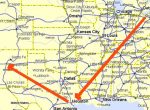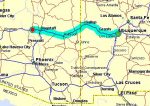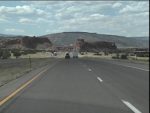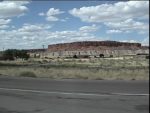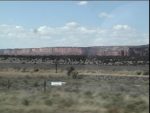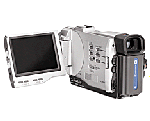Today was a travel day. We started out on a 9:00am EDT flight from Cleveland to Houston (having driven to Cleveland from Cincinnati the night before). We enjoyed the luxuries of first class as we flew through some rough weather to land at a rainy George Bush Airport in Houston.
The weather delayed us for a bit, and even after boarding the plane (again in first class), we sat on the runway for about 40 minutes before we were released by air traffic control for Albuquerque. We landed in New Mexico about an hour and a half late, around 2:15pm MDT.
After grabbing our luggage from baggage claim, we headed out to the parking garage to pick up our rental car from Budget. We loaded up the navy blue Ford Explorer and hit the road for Arizona.
The countryside we drove through was amazing, especially in New Mexico (see pictures below). Six hours later (8:00pm MST (Arizona does not observe daylight savings time)), we pulled up to the Fray Marcos Hotel in Williams.
After unpacking the Explorer, checking into our room, and reorganzing some of our luggage for tomorrow, we walked over the Max and Thelma’s for dinner.
Like I said, a travel day. Tomorrow, the real fun begins.
- our flight path from Cleveland to Albuquerque
- our driving route from Albuquerque to Williams
- I-40 in New Mexico heading for Arizona
- racing a train in New Mexico
- more spectacular cliffs and mountains
- the Continental Divide
